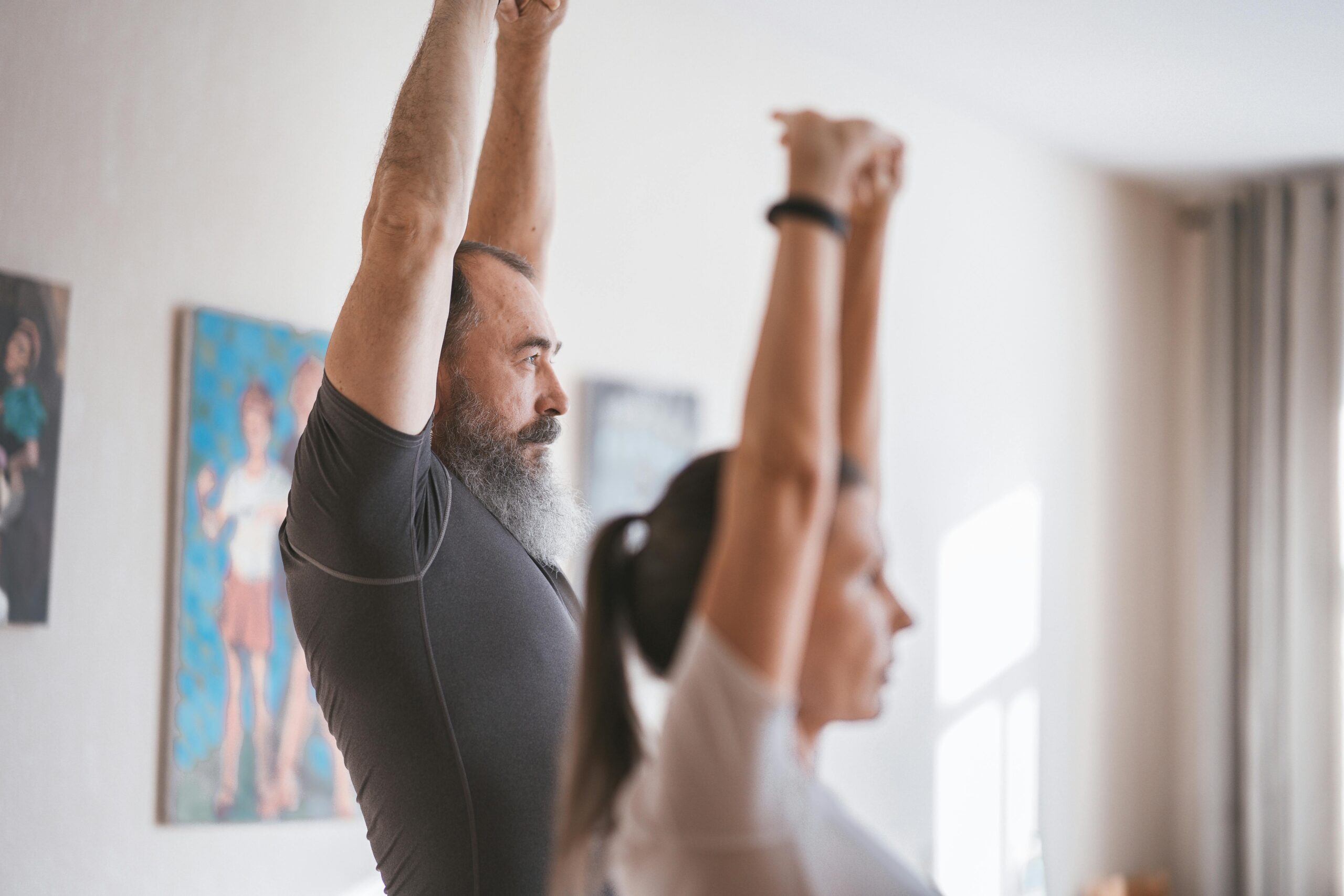6 Great At-Home Exercises For Over-60s

6 Effective At-Home Exercises for Over 60s: Stay Active and Healthy
Maintaining an active lifestyle is crucial for individuals over 60 to support overall health, mobility, and well-being. While going to the gym or attending fitness classes may not always be feasible, there are plenty of effective exercises that can be done in the comfort of your own home. Here are six essential at-home exercises tailored specifically for seniors to promote strength, flexibility, balance, and cardiovascular health.
1. Chair Squats: Strengthen Lower Body Muscles
Chair squats are a simple yet effective exercise for strengthening the muscles of the lower body, including the quadriceps, hamstrings, and glutes, while also improving mobility and stability.
How to do it:
- Stand in front of a sturdy chair with your feet hip-width apart.
- Lower your body down as if you were going to sit in the chair, keeping your weight on your heels and your chest lifted.
- Pause briefly when your buttocks touch the chair, then return to standing position by pushing through your heels.
Perform 2-3 sets of 10-15 repetitions, gradually increasing as your strength improves.
2. Wall Push-Ups: Build Upper Body Strength
Wall push-ups are a modified version of the traditional push-up that target the muscles of the chest, shoulders, and arms while providing a stable base of support.
How to do it:
- Stand facing a wall with your arms extended at shoulder height and palms flat against the wall, slightly wider than shoulder-width apart.
- Lean forward and bend your elbows to lower your chest towards the wall, keeping your body in a straight line from head to heels.
- Push through your palms to return to the starting position.
Perform 2-3 sets of 8-12 repetitions, adjusting the distance from the wall to increase or decrease the intensity.
3. Leg Raises: Improve Core Strength
Leg raises are an effective exercise for strengthening the abdominal muscles and improving core stability, which is essential for maintaining balance and preventing falls.
How to do it:
- Lie flat on your back with your arms by your sides and legs extended.
- Keeping your lower back pressed into the floor, slowly lift your legs towards the ceiling until they form a 90-degree angle with your torso.
- Lower your legs back down to the starting position with control, avoiding arching your lower back.
Perform 2-3 sets of 10-15 repetitions, focusing on maintaining proper form and controlled movements.
4. Standing Calf Raises: Enhance Lower Leg Strength
Standing calf raises target the muscles of the calf and ankle, which are important for walking, balance, and stability.
How to do it:
- Stand upright with your feet hip-width apart and hands resting on a sturdy surface for balance support.
- Rise up onto the balls of your feet as high as possible, lifting your heels off the ground.
- Lower your heels back down to the starting position with control.
Perform 2-3 sets of 12-15 repetitions, gradually increasing the range of motion as your calf strength improves.
5. Seated Leg Extensions: Strengthen Quadriceps
Seated leg extensions are an excellent exercise for targeting the quadriceps muscles without putting stress on the knees.
How to do it:
- Sit upright in a sturdy chair with your feet flat on the floor.
- Extend one leg straight out in front of you, squeezing the quadriceps at the top of the movement.
- Lower your leg back down to the starting position with control.
Perform 2-3 sets of 10-12 repetitions on each leg, focusing on slow and controlled movements.
6. Marching in Place: Boost Cardiovascular Health
Marching in place is a simple yet effective cardiovascular exercise that can be done anywhere to increase heart rate and improve circulation.
How to do it:
- Stand tall with your feet hip-width apart and arms hanging by your sides.
- Lift your knees towards your chest alternately, as if you were marching in place.
- Pump your arms naturally to increase intensity and engage the upper body.
Perform marching in place for 5-10 minutes as part of your daily routine, gradually increasing the duration as your fitness level improves.
In Conclusion
Incorporating these at-home exercises into your routine can help seniors maintain strength, flexibility, balance, and cardiovascular health without the need for expensive equipment or gym memberships. Remember to start slowly, listen to your body, and consult with a healthcare professional before beginning any new exercise program. With consistency and dedication, staying active at home can contribute to a healthier and more vibrant lifestyle well into your senior years.
